Unique Czech Towns: Český Krumlov
In the Czech Republic, besides Prague, there are many small towns with unique charm. The most famous among them is undoubtedly Český Krumlov. Known as one of the country’s most iconic historic towns, it may be small in population and size compared to Prague, but its architecture and historical significance are equally impressive. From the intricate layout to the exquisite buildings, and from its deep history to its rich culture, the town exudes elegance and a profound sense of history. These qualities have made it a popular destination for tourists from all over the world, and in recent years, it has become one of the most visited places in the country.
The town’s name includes “Český” (Czech) to distinguish it from another town named Krumlov—Moravský Krumlov (Moravian Krumlov), which is also quite old but far less known. Many visitors refer to it simply as “CK” for short. Located in South Bohemia, it is also known as Bohemian Krumlov. Situated near the Austrian border, the Vltava River winds through the town, adding charm to the landscape. Although the surrounding area consists mostly of plains, there are occasional hills, creating gentle elevations that match the meaning of “Krumlov” in German: “uneven meadow.” The German influence isn’t just in the name—German was the primary language here since the town was originally founded by German settlers.
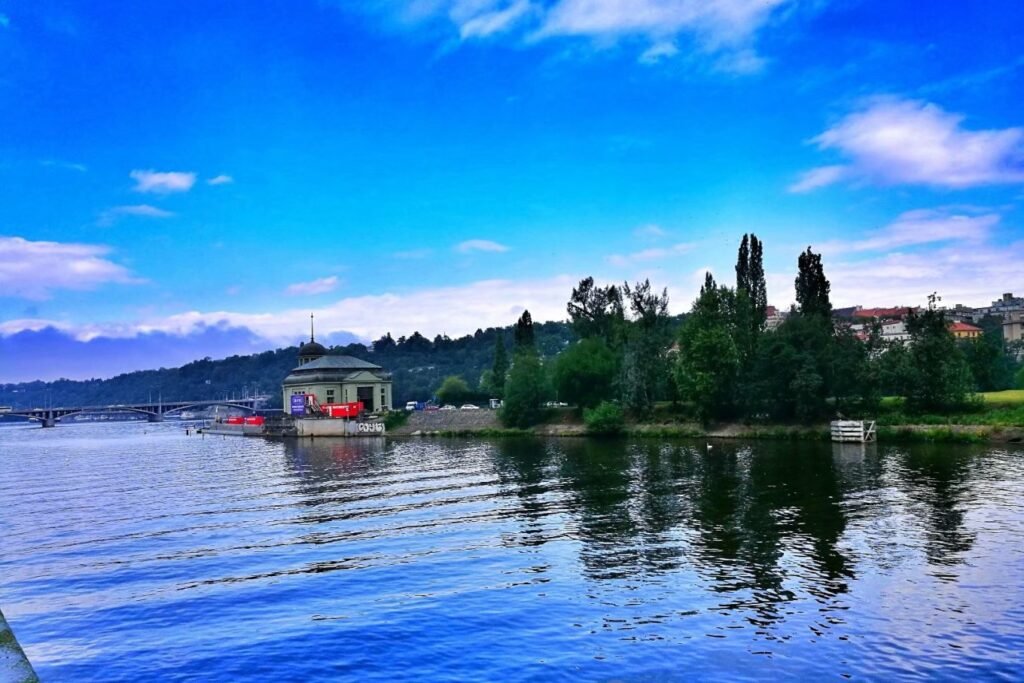
The earliest signs of human settlement in this area date back centuries, but the town’s official history began in the 13th century, when the German noble family, the House of Vítkovci, built a castle here. In the 14th century, the influential Rosenberg family took over, expanding trade routes, building bridges, and attracting merchants from all directions. By the 16th century, the town had become a thriving commercial hub. Many of the Gothic, Renaissance, and Baroque buildings still standing today date back to that era. In the 18th century, the town came under the control of the Schwarzenberg family, another prominent German dynasty. Over centuries of development, the town evolved into the grand settlement dominated by the castle complex that we see today. The town’s growth and architecture are deeply intertwined with the history and influence of these German noble families.
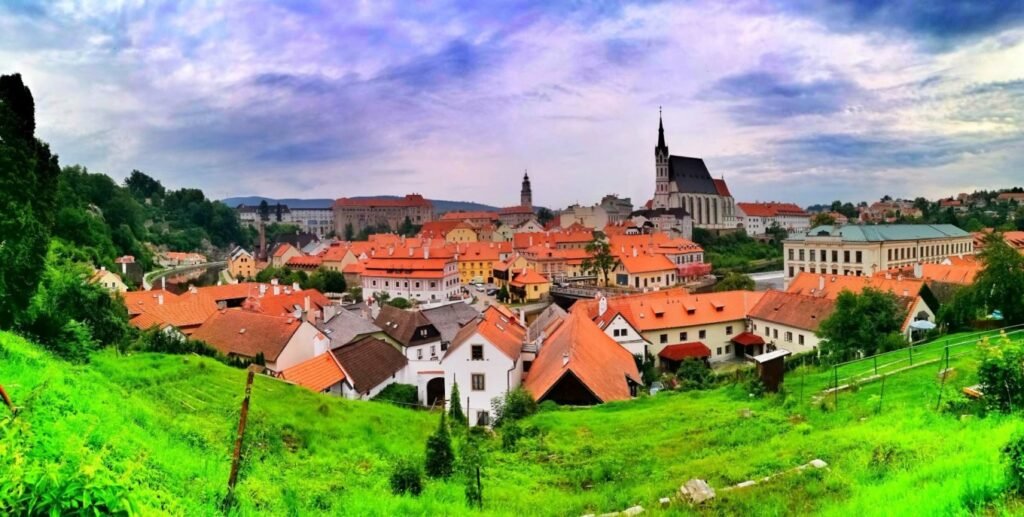
During World War II, the town was annexed by Nazi Germany as part of the Sudetenland. After the war, it was returned to Czechoslovakia. Under communist rule, the German-speaking population was expelled, and the town became predominantly Czech. Following the Velvet Revolution, which marked the end of communist rule, Český Krumlov began to revitalize its economy through tourism. With financial support from Western countries, the entire town underwent extensive restoration, bringing many of the old buildings back to their former 18th-century glory.


Today, Český Krumlov feels like a town frozen in time, with its medieval charm intact. It has become one of the most beloved travel destinations in Europe and was designated a UNESCO World Heritage site in 1992. Visiting this town feels like stepping into a dream or traveling through a time tunnel, with scenes from 500 years ago unfolding before your eyes.
From a hilltop vantage point, you can see the Vltava River flowing through the town in an “S” shape. Blue skies and fluffy clouds above, lush green meadows in the distance, and rows of red-roofed, white-walled houses nestled along the hillside create a vibrant and lively atmosphere. This picturesque setting matches the idyllic image many travelers imagine when thinking of a European town: winding rivers, ancient stone bridges, and quiet old streets, all coming together like a painting straight out of a storybook.
At the heart of the town lies the Český Krumlov Castle (Hrad a zámek Český Krumlov), the second-largest castle in the Czech Republic after Prague Castle. Originally built in 1240, it has undergone multiple expansions over the centuries, becoming a grand complex that blends various architectural styles. Remarkably, the castle has survived the passage of time without losing its original charm and remains one of Europe’s finest examples of a medieval town.


Perched across the river, the castle stands as the town’s most prominent landmark, capturing the attention of every visitor. In many ways, the town seems to revolve around the castle. Climbing to the top of the castle tower offers a breathtaking panoramic view of the town and the surrounding river valley. From there, you can watch the Vltava River flow endlessly onward, creating a truly awe-inspiring and peaceful experience.

The castle tower is tall and imposing, standing as the crown jewel of the castle complex. Its majestic structure can be seen from almost every corner of the town. However, reaching the top from the banks of the Vltava River at the base of the hill requires climbing only 162 steps.
Originally constructed in the mid-13th century, the tower was repeatedly damaged by fires over the centuries. After several rounds of reconstruction, its architectural style evolved from the original pure Gothic design into the eclectic blend of styles seen today, incorporating Renaissance elements and more.
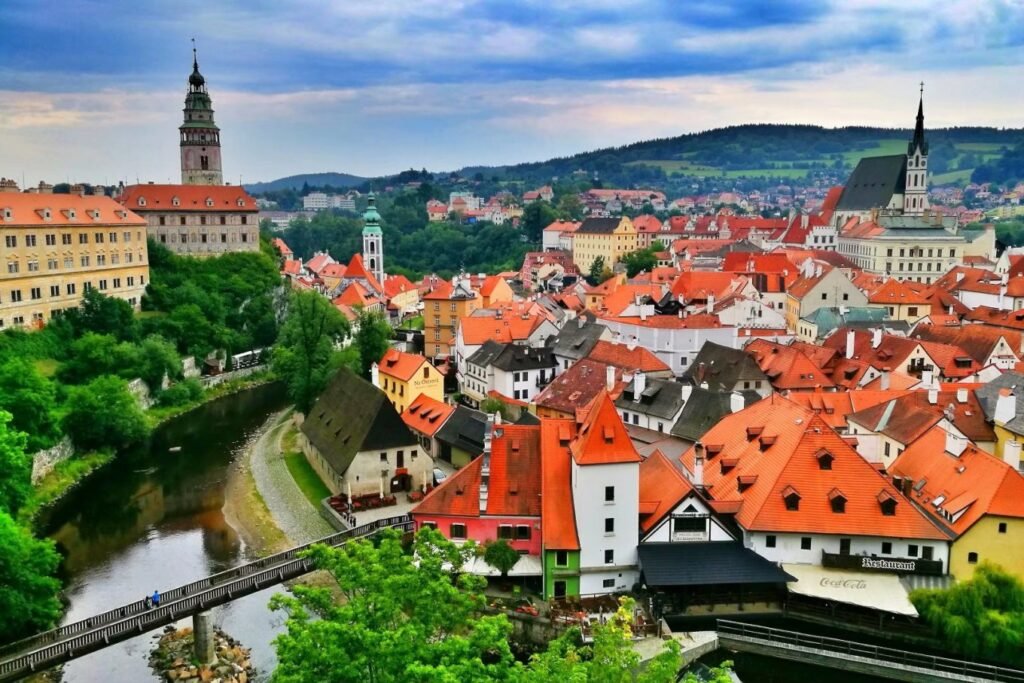

Karlovy Vary: The City of Hot Springs
Karlovy Vary, also known as Carlsbad, is a world-renowned resort town and one of the most famous spa destinations in the Czech Republic. Located less than 200 kilometers from Prague, it lies at the western edge of the country, just 40 kilometers from the German border. This mountain town, nestled in the valleys of the Ohře River, offers not only cool summers but also abundant thermal springs, making it an ideal summer retreat.

The natural hot springs are the town’s most prized asset. Hot water bubbles up from numerous springs scattered across the river valley’s slopes. Each spring has a different water temperature, ranging from mild warmth to a scorching 72°C. These mineral-rich waters have long been known for their therapeutic and healing properties and are also considered a valuable natural resource. Like other spa towns around the world, Karlovy Vary has become a well-established destination for mineral water treatments and relaxation.
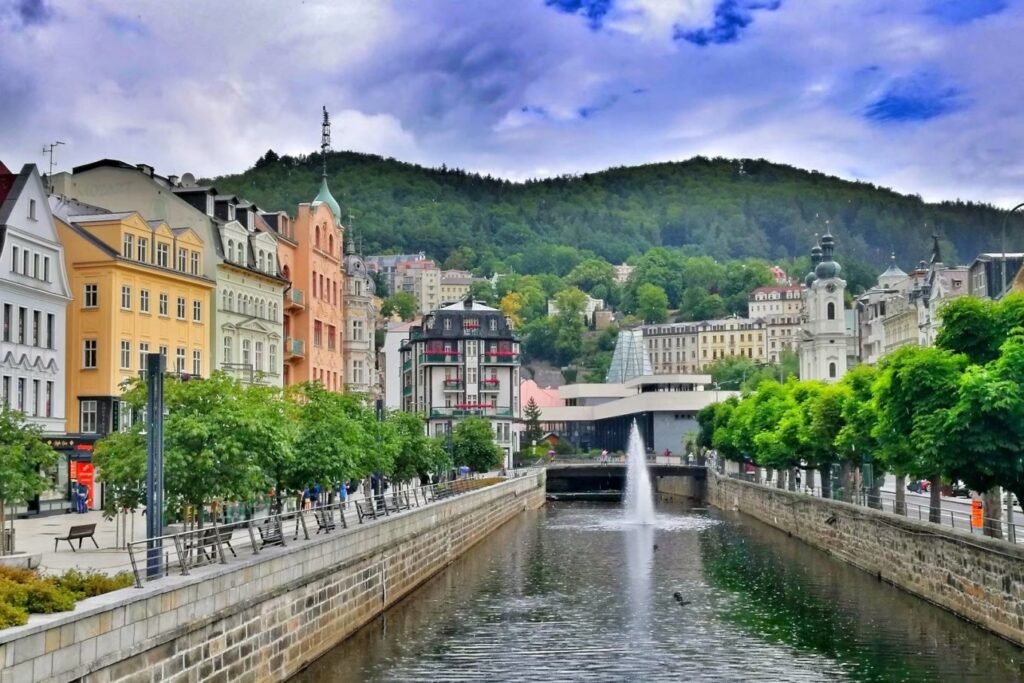

The springs, combined with the town’s beautiful natural scenery, mild climate, and charming cultural atmosphere, have drawn visitors for centuries, including many notable figures. Historically, royalty, artists, and intellectuals have visited Karlovy Vary—from Holy Roman Emperor Charles IV to Peter the Great, and from Charlie Chaplin to Yuri Gagarin, the first human in space. The list also includes renowned composers and writers like Beethoven, Chopin, Mozart, Goethe, Pushkin, Gogol, Turgenev, and Schiller, all of whom left traces of their presence here. Many of their former residences, now historical sites, are scattered across the lush valleys. These homes, surrounded by greenery, reflect various architectural styles from different periods, yet each feels like a small masterpiece. Architects here skillfully integrated the buildings into the natural surroundings, creating a perfect blend of architecture and nature—white walls topped with red roofs, gardens filled with flowers, and houses nestled among the trees.
Karlovy Vary is often described as more than just a garden city; it’s a city of small, beautifully crafted gardens that together form a masterpiece of urban design. This seamless integration of nature and architecture has earned Karlovy Vary the reputation of being the “Museum of Architectural Art” in the Czech Republic, second only to Prague.
Some of the town’s most impressive structures are its spa colonnades and luxurious hotels. Due to the town’s mountainous terrain, most of the springs are concentrated along the banks of the Teplá River, a tributary of the Ohře River. Within just a few square kilometers, there are over 300 springs with varying temperatures, either bubbling up individually or gushing in clusters. To make the springs accessible and enjoyable for visitors, a variety of colonnades and pavilions were built around the major springs. These structures, made with elegant wooden pillars or glass roofs, are beautifully decorated with sculptures and intricate carvings, creating an aesthetic that is both functional and artistic. The result is a picturesque scene where green mountains, flowing rivers, and thermal springs harmoniously complement the town’s architectural treasures.
Among the most famous spa colonnades are the Mill Colonnade, the Grand Colonnade, the Market Colonnade, the Park Colonnade, and Spa III. These pavilions allow visitors to enjoy the hot springs year-round, regardless of weather conditions.
Karlovy Vary’s history dates back to 1350, when it was founded by Charles IV, the Holy Roman Emperor, who gave the town its name, meaning “Charles’ Springs.” According to legend, the emperor was out hunting when he accidentally shot a deer. The wounded animal leaped into a hot spring and, to everyone’s surprise, emerged with its wounds healed. Impressed by the spring’s healing powers, Charles ordered the construction of the town. To this day, a statue of the “Deer Jump” stands on a hill in memory of this story.
The town flourished in the 16th century as aristocrats and noble families built vacation villas here, contributing to the town’s growth. Although Karlovy Vary was nearly destroyed by two major fires in 1604 and 1759, it quickly recovered and continued to thrive. In the late 19th century, during the rise of Czech industry, the town entered another golden era, marked by the construction of many hotels and resorts in Neo-Baroque and Neo-Renaissance styles, many of which still stand today as historical landmarks.

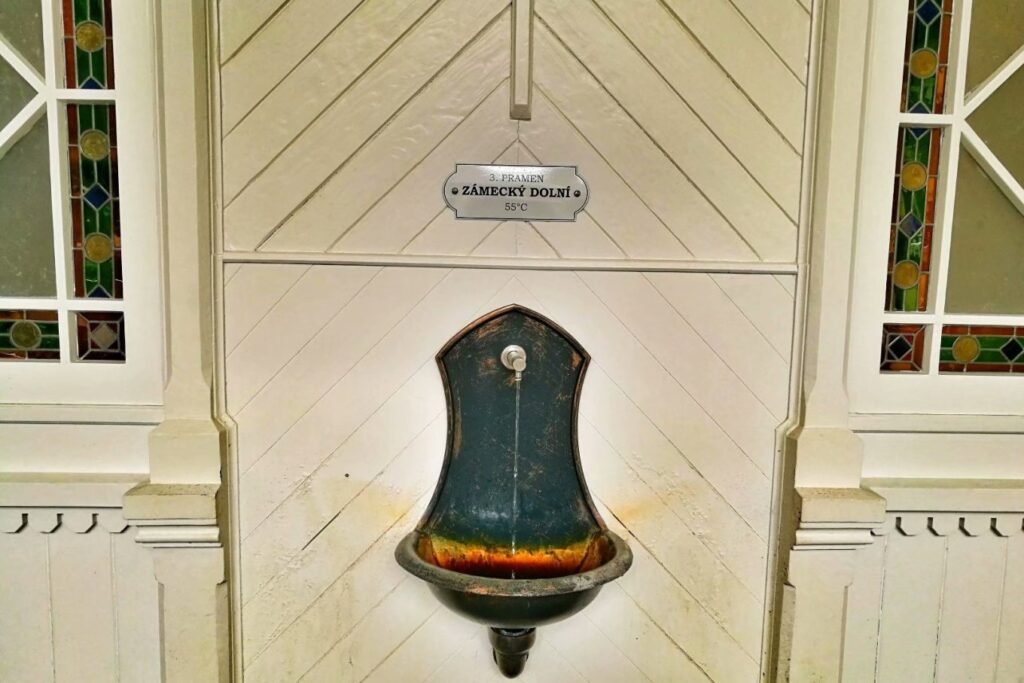
After World War II, the newly established communist government nationalized the spas, transforming Karlovy Vary into a shared vacation spot for countries in the Soviet bloc. During this period, most visitors were from the Soviet Union and other socialist states. After the Velvet Revolution of 1989, the spas were privatized, and Karlovy Vary once again opened its doors to the world.
While the town isn’t large, exploring it can take time. The main tourist route follows the Teplá River from the Mill Colonnade to the Grand Colonnade. Despite the passage of time, Karlovy Vary’s streets and architecture remain vibrant and well-preserved. Visitors will still notice the distinct sulfuric scent of the mineral waters lingering in the air, while the lush vegetation surrounding the town thrives thanks to the area’s abundant moisture. The picturesque setting, with its blue skies, green mountains, and brightly colored European-style buildings, is truly captivating.
One thing that has changed over the years, however, is the number of tourists—now, the town’s pedestrian streets are bustling with visitors. Many of them purchase small porcelain cups, a local specialty, which are both functional for sipping the healing waters and make for excellent souvenirs. Other popular local products include floral liqueurs and delicate crystal glassware.
Karlovy Vary is also known for its annual film festival, which has been held since 1950 and is considered one of the most prestigious film festivals in the world.
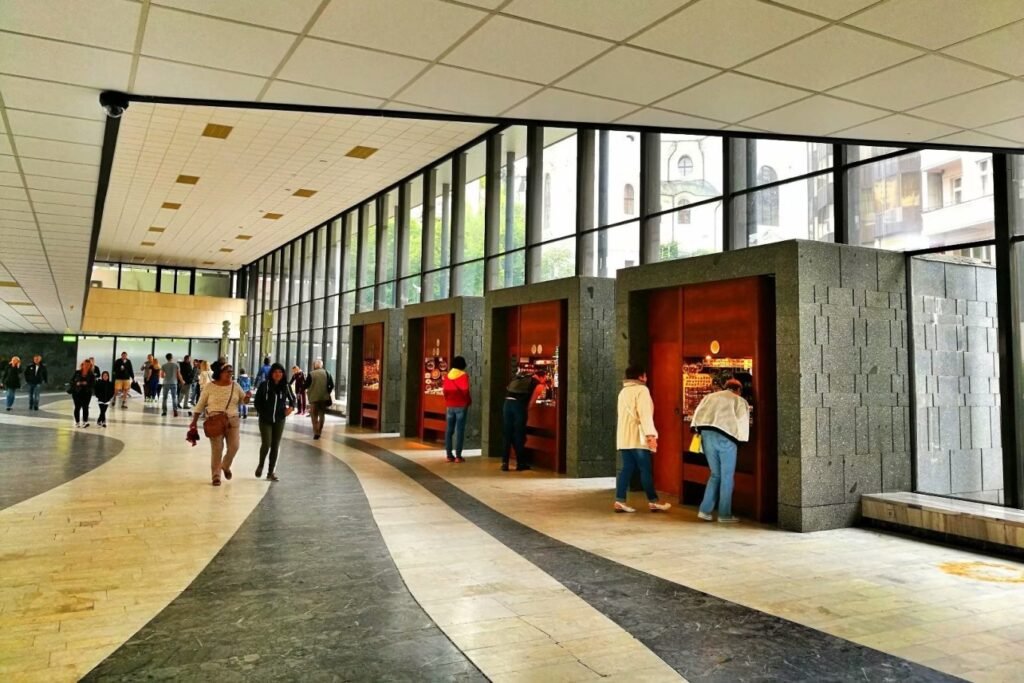
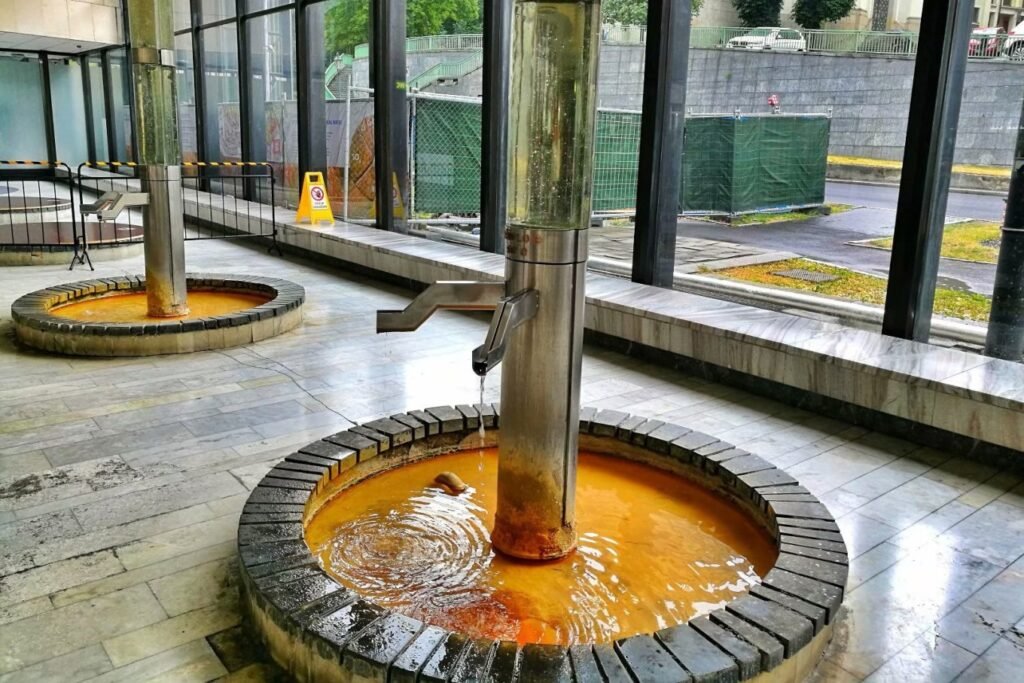
The Grand Colonnade, also known as the Hot Spring Pavilion, is a modern structure built in 1975 with reinforced concrete and a glass roof. Its open and airy design ensures the space stays warm in winter and cool in summer. Inside, several hot springs are accessible to visitors, making it a key attraction in Karlovy Vary.
In addition to enjoying the springs, tourists can shop for a variety of souvenirs here. Popular items include porcelain spa cups, traditional spa wafers, “Thirteen Springs” herbal liqueur, and delicate crystal figurines and jewelry. The pavilion has become a must-visit destination, offering both a relaxing spa experience and a chance to pick up memorable keepsakes.


The Mill Colonnade stretches about 500 meters in length and 20 meters in width. Built in 1792, it was the first wooden colonnade in Karlovy Vary, designed to provide shelter from the elements, making it unique at the time.
The colonnade houses five hot springs: the Mill Spring (Mlýnský pramen), the Rusalka Spring (pramen Rusalka), the Prince Václav Spring (Pramen knížete Václava), the Libuše Spring (pramen Libuše), and the Rock Spring (Skalní pramen). Back in the day, the Mill Colonnade was regarded as the most prestigious location in the spa town.
Outside the colonnade, 12 sand sculptures representing the months of the year are on display, adding a touch of mythological charm to the surroundings.


